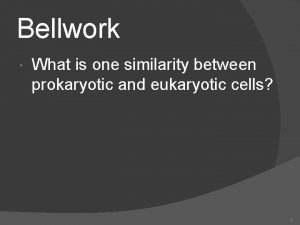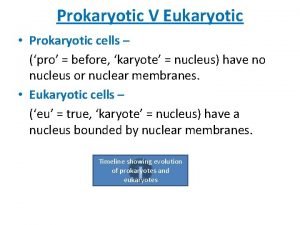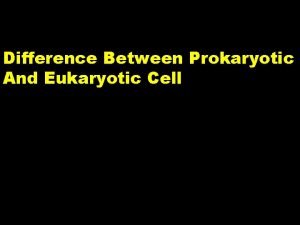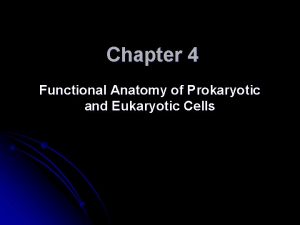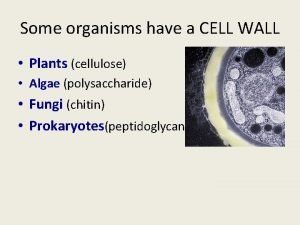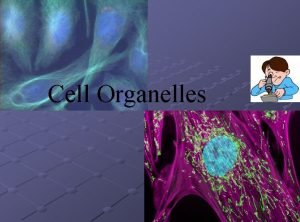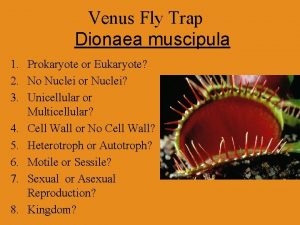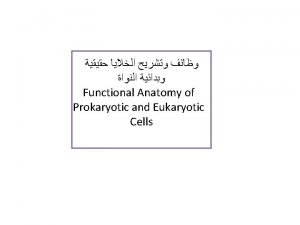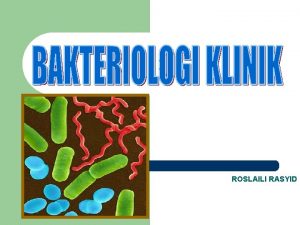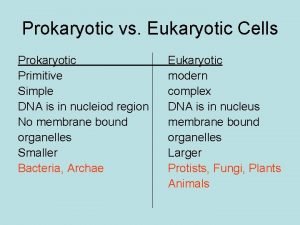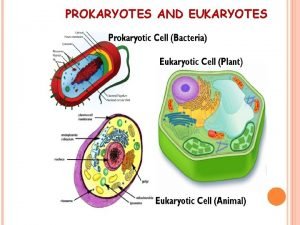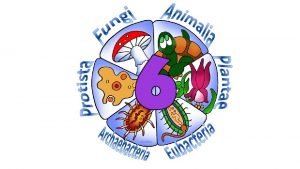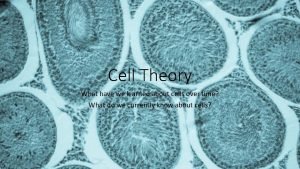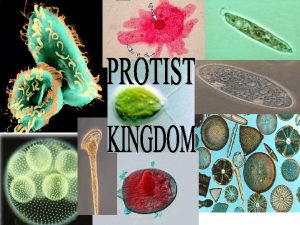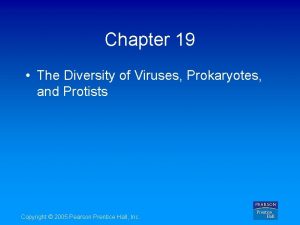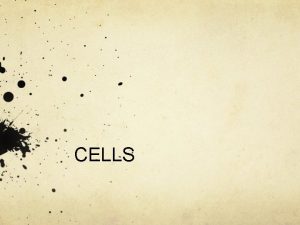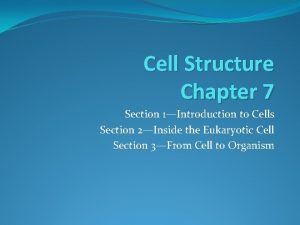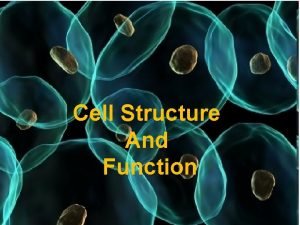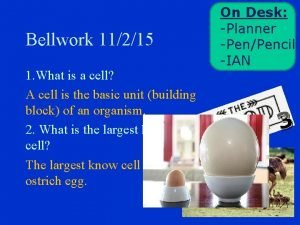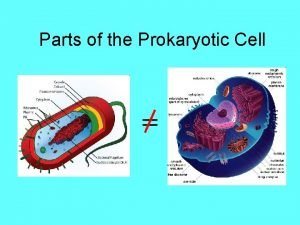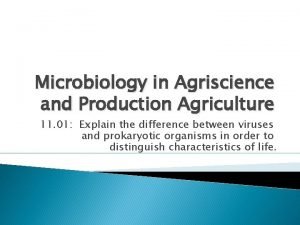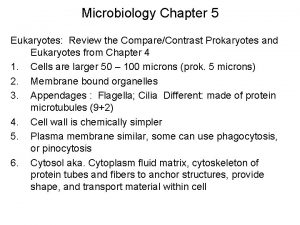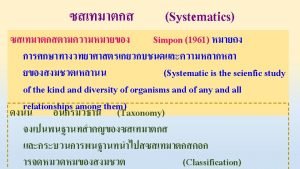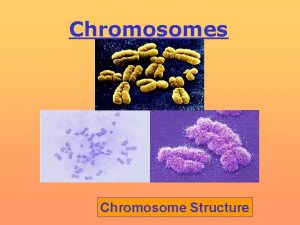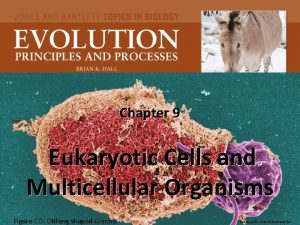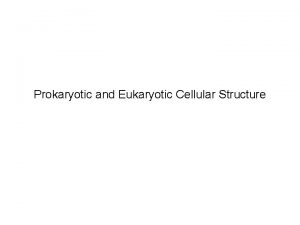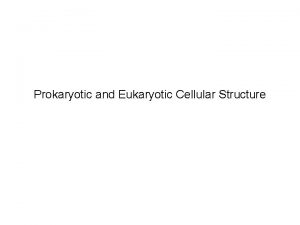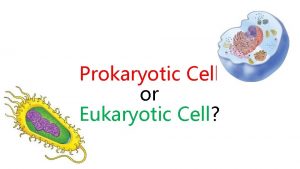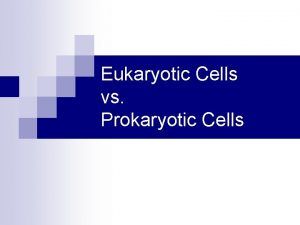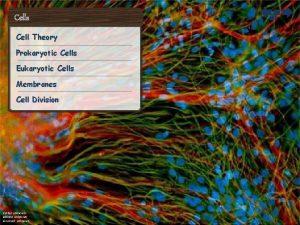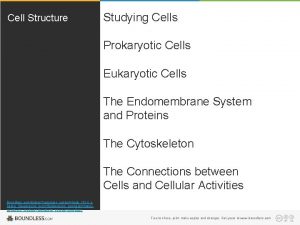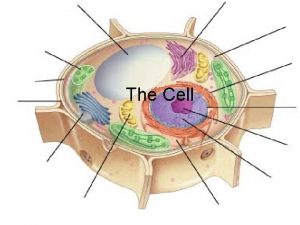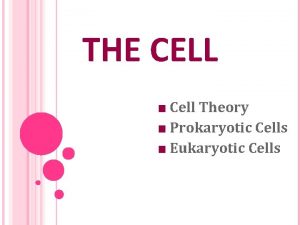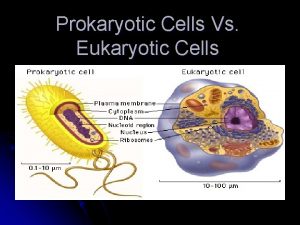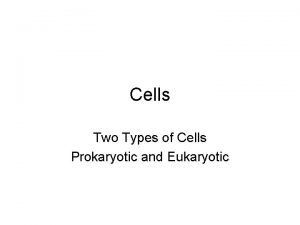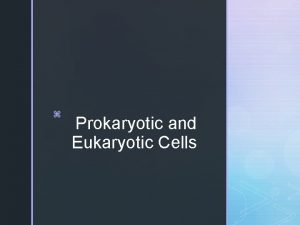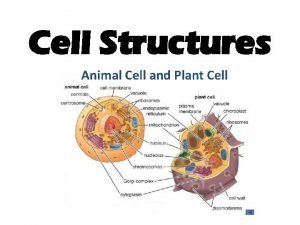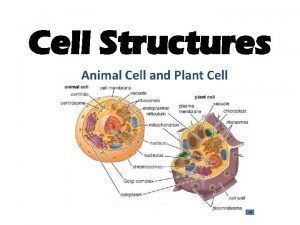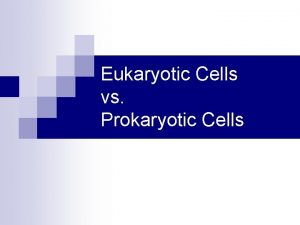Cell Types Prokaryotic Eukaryotic Prokaryotic Cells First cell












































- Slides: 44

Cell Types • Prokaryotic • Eukaryotic

Prokaryotic Cells • First cell type on earth • Cell type of Bacteria and Archaea

Prokaryotic Cells • No membrane bound nucleus • Nucleoid = region of DNA concentration • Organelles not bound by membranes

Eukaryotic Cells • Nucleus bound by membrane • Include fungi, protists, plant, and animal cells • Possess many organelles Protozoan

Representative Animal Cell

Representative Plant Cell

Organelles • Cellular machinery • Two general kinds • Derived from membranes • Bacteria-like organelles

Bacteria-Like Organelles • Derived from symbiotic bacteria • Ancient association • Endosymbiotic theory • Evolution of modern cells from cells & symbiotic bacteria

Plasma Membrane • Contains cell contents • Double layer of phospholipids & proteins

Phospholipids • Polar • Hydrophylic head • Hydrophobic tail • Interacts with water

Movement Across the Plasma Membrane • A few molecules move freely • Water, Carbon dioxide, Ammonia, Oxygen • Carrier proteins transport some molecules • Proteins embedded in lipid bilayer • Fluid mosaic model – describes fluid nature of a lipid bilayer with proteins


Membrane Proteins 1. Channels or transporters • Move molecules in one direction 2. Receptors • Recognize certain chemicals

Membrane Proteins 3. Glycoproteins • Identify cell type 4. Enzymes • Catalyze production of substances

Cell Walls • Found in plants, fungi, & many protists • Surrounds plasma membrane

Cell Wall Differences • Plants – mostly cellulose • Fungi – contain chitin

Cytoplasm • Viscous fluid containing organelles • components of cytoplasm • • Interconnected filaments & fibers Fluid = cytosol Organelles (not nucleus) storage substances

Cytoskeleton • Filaments & fibers • Made of 3 fiber types • Microfilaments • Microtubules • Intermediate filaments • 3 functions: • mechanical support • anchor organelles • help move substances

A = actin, IF = intermediate filament, MT = microtubule

Cilia & Flagella • Provide motility • Cilia • Short • Used to move substances outside human cells • Flagella • Whip-like extensions • Found on sperm cells • Basal bodies like centrioles

Cilia & Flagella Structure • Bundles of microtubules • With plasma membrane

Centrioles • Pairs of microtubular structures • Play a role in cell division

Membranous Organelles • Functional components within cytoplasm • Bound by membranes

Nucleus • Control center of cell • Double membrane • Contains • Chromosomes • Nucleolus

Nuclear Envelope • Separates nucleus from rest of cell • Double membrane • Has pores

DNA • Hereditary material • Chromosomes • DNA • Proteins • Form for cell division • Chromatin

Nucleolus • Most cells have 2 or more • Directs synthesis of RNA • Forms ribosomes

Endoplasmic Reticulum • Helps move substances within cells • Network of interconnected membranes • Two types • Rough endoplasmic reticulum • Smooth endoplasmic reticulum

Rough Endoplasmic Reticulum • Ribosomes attached to surface • Manufacture proteins • Not all ribosomes attached to rough ER • May modify proteins from ribosomes

Smooth Endoplasmic Reticulum • No attached ribosomes • Has enzymes that help build molecules • Carbohydrates • Lipids

Golgi Apparatus • Involved in synthesis of plant cell wall • Packaging & shipping station of cell

Golgi Apparatus Function 1. Molecules come in vesicles 2. Vesicles fuse with Golgi membrane 3. Molecules may be modified by Golgi

Golgi Apparatus Function (Continued) 4. Molecules pinched-off in separate vesicle 5. Vesicle leaves Golgi apparatus 6. Vesicles may combine with plasma membrane to secrete contents


Lysosomes • Contain digestive enzymes • Functions • Aid in cell renewal • Break down old cell parts • Digests invaders

Vacuoles • Membrane bound storage sacs • More common in plants than animals • Contents • Water • Food • wastes

Bacteria-Like Organelles • Release & store energy • Types • Mitochondria (release energy) • Chloroplasts (store energy)

Mitochondria • Have their own DNA • Bound by double membrane

Mitochondria • Break down fuel molecules (cellular respiration) • Glucose • Fatty acids • Release energy • ATP

Chloroplasts • Derived form photosynthetic bacteria • Solar energy capturing organelle

Photosynthesis • Takes place in the chloroplast • Makes cellular food – glucose

Review of Eukaryotic Cells

Review of Eukaryotic Cells

 Prokaryotic cells vs eukaryotic cells
Prokaryotic cells vs eukaryotic cells Prokaryotic vs eukaryotic cells venn diagram
Prokaryotic vs eukaryotic cells venn diagram 4 types of eukaryotic cells
4 types of eukaryotic cells Which organisms are prokaryotes
Which organisms are prokaryotes Prokaryotic vs eukaryotic cell
Prokaryotic vs eukaryotic cell Prokaryotic cell and eukaryotic cell similarities
Prokaryotic cell and eukaryotic cell similarities Life
Life 3 parts of cell theory
3 parts of cell theory Cytoskeletal protein
Cytoskeletal protein Similarity between prokaryotic and eukaryotic cells
Similarity between prokaryotic and eukaryotic cells Comparison of prokaryotic and eukaryotic cells
Comparison of prokaryotic and eukaryotic cells Prokaryotic and eukaryotic cells chart
Prokaryotic and eukaryotic cells chart Prokaryotic
Prokaryotic Similarities between prokaryotic and eukaryotic cells
Similarities between prokaryotic and eukaryotic cells Differences between prokaryotic and eukaryotic cells
Differences between prokaryotic and eukaryotic cells Functional anatomy of prokaryotic and eukaryotic cells
Functional anatomy of prokaryotic and eukaryotic cells Are cell walls prokaryotic or eukaryotic
Are cell walls prokaryotic or eukaryotic Eukaryotic cell
Eukaryotic cell Are plants multicellular eukaryotes
Are plants multicellular eukaryotes Is animal cell prokaryotic or eukaryotic
Is animal cell prokaryotic or eukaryotic Eukaryotic cell animal cell
Eukaryotic cell animal cell Venus fly trap prokaryotic or eukaryotic
Venus fly trap prokaryotic or eukaryotic Eukaryotic vs prokaryotic transcription
Eukaryotic vs prokaryotic transcription Chromosomes prokaryotic or eukaryotic
Chromosomes prokaryotic or eukaryotic Prenucleus
Prenucleus Types of organelles
Types of organelles Amphitrich
Amphitrich Amoeba prokaryotic or eukaryotic
Amoeba prokaryotic or eukaryotic The oldest prokaryote is
The oldest prokaryote is Prokaryotic unicellular
Prokaryotic unicellular Prokaryotic vs eukaryotic
Prokaryotic vs eukaryotic Eukaryotic vs prokaryotic
Eukaryotic vs prokaryotic Plantae prokaryotic or eukaryotic
Plantae prokaryotic or eukaryotic What is a plant like protist
What is a plant like protist Staphylococcus prokaryotic or eukaryotic
Staphylococcus prokaryotic or eukaryotic Cytoskeleton prokaryotic or eukaryotic
Cytoskeleton prokaryotic or eukaryotic Food vacuole eukaryotic or prokaryotic
Food vacuole eukaryotic or prokaryotic Staphylococcus prokaryotic or eukaryotic
Staphylococcus prokaryotic or eukaryotic Is amphiuma liver prokaryotic or eukaryotic
Is amphiuma liver prokaryotic or eukaryotic Parts of a prokaryotic cell
Parts of a prokaryotic cell Green algae prokaryotic or eukaryotic
Green algae prokaryotic or eukaryotic Paramecium prokaryotic or eukaryotic
Paramecium prokaryotic or eukaryotic Monera eukaryotic or prokaryotic
Monera eukaryotic or prokaryotic How to read chromosome
How to read chromosome Green algae prokaryotic or eukaryotic
Green algae prokaryotic or eukaryotic









